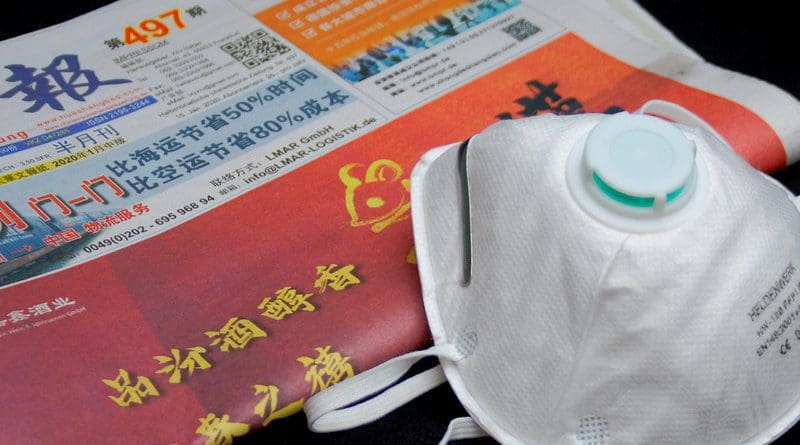China’s Challenges Amid COVID-19 And Great Power Competition – Analysis
By Wang Yong*
The COVID-19 pandemic and major power competition tested China in 2021. A review of the trends of 2021 reveals the opportunities and challenges ahead.
COVID-19 continues to have a big impact on China’s economy. China controlled the pandemic, which helped its rapid economic recovery as it outperformed other major economies in 2020. But in 2021, new waves of infection sent shock waves from economically underdeveloped regions — including Inner Mongolia and Gansu — to the country’s economic centres like Beijing, Shanghai and Zhejiang. China adheres to a zero-COVID-19 policy of eliminating the virus and public opinion opposes the so-called ‘living with the virus’ model followed by Western countries.
After promoting poverty alleviation for many years, the government announced the goals of ‘common prosperity’, getting rid of absolute poverty and the construction of a well-off society. Great progress has been made in promoting green development, including reversing environmental deterioration. China is also at the forefront of the development of new energy power generation and new energy vehicles.
Since the Biden administration took office in the United States, it has mobilised allies to contain China’s influence, including reinvigorating the Quadrilateral Security Dialogue (Quad) and establishing the AUKUS security arrangement. Senior diplomats from China and the United States engaged in quarrels in March, but since August they have carried out high-level diplomatic activities. The leaders of the two countries held their first video meeting on 16 November. Both sides agreed to stabilise their relations with ‘guardrails’ and facilitate visas for journalists. They also reached a joint statement promising to work together on climate change in Glasgow before the COP26 meeting ended, surprising the world.
But the improvement of Sino-US relations was limited. The United States tightened export restrictions on Chinese high-tech enterprises and forbade US investment in China’s so-called military-civilian fusion firms, safeguarding US advantages in big data, artificial intelligence and quantum computing.
China has adopted key steps to continue integration with the regional and global economy, sending a strong political signal to the outside world on reform. China signed the trade liberalising Regional Comprehensive Economic Partnership (RCEP), which will be implemented at the beginning of 2022. It has formally applied to join the Comprehensive and Progressive Agreement for Trans-Pacific (CPTPP) and the Digital Economy Partnership Agreement, demonstrating a will to promote domestic economic restructuring by meeting high standards of economic openness.
China’s economy is facing some uncertainties. The question is how much influence the new Omicron variant of COVID-19 will have and what the cost of the strict ‘dynamic zeroing-out’ anti-virus measures on the economy will be. The country faces a tough time maintaining economic growth while also containing the pandemic. While lowering the economic growth target to between 4–5 per cent, the government also has prioritised the goal of stable employment.
China is likely to adopt expansive financial and monetary policies to stimulate economic growth, partly to ensure a stable political environment before the 20th Party Congress. China may find it necessary to consult further with CPTPP members to begin the accession process at an earlier time by opening up the domestic market further to create a favourable environment for domestic growth.
Another question is how to address the gap between China’s proposed goal of ‘common prosperity’ and the means to achieve it. Restricting the ‘disorderly expansion of capital’ and promoting more even wealth distribution is the right direction, but building social consensus will be a test for the country’s leadership. Related to this, solving real estate debt and local government debt problems, nurturing employment growth and maintaining moderate economic growth will be a more complicated challenge for China’s economy.
The Party and government at all levels will be in the process of handing over power in 2022. The change of local Party leadership will come at first, followed by the 20th Party Congress when a new Politburo and the new top leaders will be elected. Many people expect Xi Jinping will lead the country for a third five-year term to ensure the policies of the last ten years continue with stable and strong leadership. Yet the transition of power may take some time to work smoothly.
China–US relations will face a bigger test in 2022. The United States will hold midterm elections and China policy may become the target of fierce partisan politics as US conservatives and progressives accuse each other of being soft on China. Meanwhile, China’s domestic power transition may result in shrinking space for compromise with the United States. Domestic political struggles could lead to a further deterioration of relations, derailing critically needed cooperation on climate change between the two countries.
China will continue to pursue reunification with Taiwan but may find breakthroughs increasingly difficult with the pro-independence Tsai Ing-wen and a more confrontational Biden administration.
*About the author: Wang Yong is Professor in the School of the School of International Studies, Director of the Center for American Studies and Director of the Center for International Political Economy at Peking University.
Source: This article is published by East Asia Forum and part of an EAF special feature series on 2021 in review and the year ahead.

